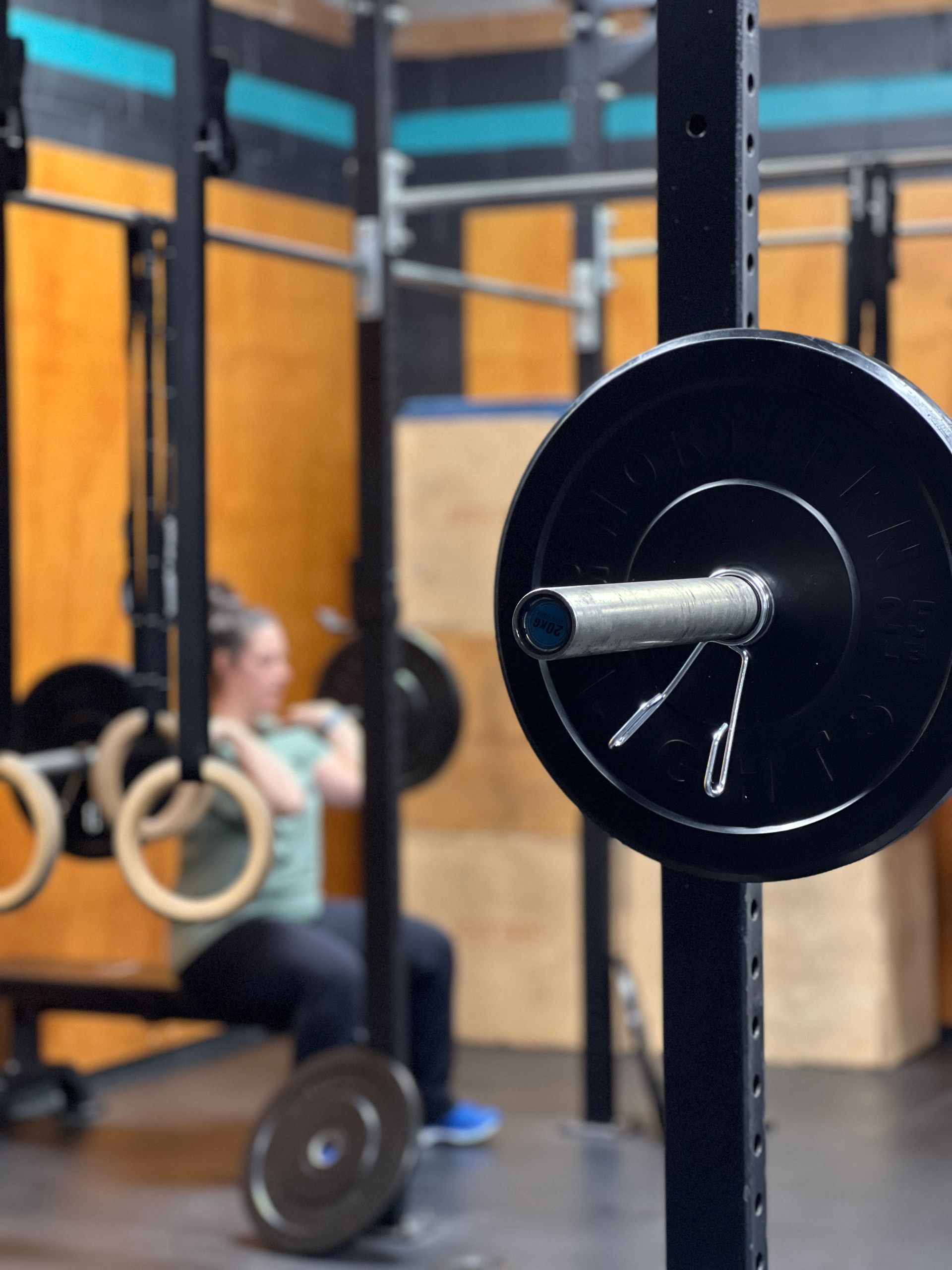Functional fitness will mean something different to each individual person…
November 25, 2019
Written By: MJ Greidanus
What is functional fitness? It is something that is thrown around a lot in the fitness world, but what does it really mean?!
Functional Fitness is using everyday movements and activities in your exercise routine. We squat, reach, lift, pull and carry in our daily lives. Functional movements are put into action in a safe and manageable place in your fitness routine.
To understand it even easier, think of it this way…
In our daily lives we sit down and stand up many times throughout the day. This is your squat. We pick things up off the floor. This is your deadlift. We take things out and put things away in cupboards. We are reaching and lifting over our head. We carry groceries, work in our gardens and flowerbeds, play with grandchildren or pets and so many more things daily and don’t even think about it.
Functional fitness will mean something different to each individual person, depending on what your goals and needs are. What is needed for someone who wants to run a marathon and someone who just wants to keep up with energetic grandchildren will vary in degree not by the movement itself.
Quoting Greg Glassmen, the Founder of CrossFit and where Degree CrossFit Seaforth’s name came to be:
“The needs of Olympic athletes and our grandparents differ by degree, not kind. One needs functional competence to stay out of the nursing home. The other wants functional dominance to win medals.”
When we work at building our strength in the same way that we move in our daily lives, it gives us the tools to move safely, reducing the risks of injury and making our quality of life that much better.
This is so much truer as we age! We need to keep ourselves as mobile and flexible as we can, building up our strength and endurance to do what we need in our daily lives.. Many of us are caught in not only changes within our own health and mobility, but we are also busy caring for extended families and friends. We need to make the time to keep ourselves as best that we can be. Putting YOU close to the top of the priority list is a goal we all need to strive for but too often we let it slide to the bottom of the list.
Did you know we have an on-going fitness program developed specifically for men and women 50 years young and older? Click here to learn more about our Young at Heart Fitness Program! We also offer personalized fitness programs with your Personal Trainer. Click here to learn more about 1-1 Training, or, hop into our Group CrossFit classes to get a step ahead of aches and pains – reaching your full potential by clicking here!
Functional fitness works, all you need to do is start!
See you soon!
Coach MJ
maryjane@degreecrossfitseaforth.com
Functional Fitness is using everyday movements and activities in your exercise routine. We squat, reach, lift, pull and carry in our daily lives. Functional movements are put into action in a safe and manageable place in your fitness routine.
To understand it even easier, think of it this way…
In our daily lives we sit down and stand up many times throughout the day. This is your squat. We pick things up off the floor. This is your deadlift. We take things out and put things away in cupboards. We are reaching and lifting over our head. We carry groceries, work in our gardens and flowerbeds, play with grandchildren or pets and so many more things daily and don’t even think about it.
Functional fitness will mean something different to each individual person, depending on what your goals and needs are. What is needed for someone who wants to run a marathon and someone who just wants to keep up with energetic grandchildren will vary in degree not by the movement itself.
Quoting Greg Glassmen, the Founder of CrossFit and where Degree CrossFit Seaforth’s name came to be:
“The needs of Olympic athletes and our grandparents differ by degree, not kind. One needs functional competence to stay out of the nursing home. The other wants functional dominance to win medals.”
When we work at building our strength in the same way that we move in our daily lives, it gives us the tools to move safely, reducing the risks of injury and making our quality of life that much better.
This is so much truer as we age! We need to keep ourselves as mobile and flexible as we can, building up our strength and endurance to do what we need in our daily lives.. Many of us are caught in not only changes within our own health and mobility, but we are also busy caring for extended families and friends. We need to make the time to keep ourselves as best that we can be. Putting YOU close to the top of the priority list is a goal we all need to strive for but too often we let it slide to the bottom of the list.
Did you know we have an on-going fitness program developed specifically for men and women 50 years young and older? Click here to learn more about our Young at Heart Fitness Program! We also offer personalized fitness programs with your Personal Trainer. Click here to learn more about 1-1 Training, or, hop into our Group CrossFit classes to get a step ahead of aches and pains – reaching your full potential by clicking here!
Functional fitness works, all you need to do is start!
See you soon!
Coach MJ
maryjane@degreecrossfitseaforth.com

Written By: Mairead, Registered Dietitian As a Dietitian, I work with a lot of different people. One common thread is that we talk about excuses. So many people come in to a nutrition consultation and tell me about their challenges with nutrition and fitness, and then follow it up by saying something along the lines of "I know these are just excuses, I can do better". The things we often consider excuses can include having a busy job and a busy family life. Working weird hours. Struggling with the cost of groceries. Caring for loved ones. Managing health concerns, chronic diseases, or injuries. The list goes on. For my nutrition clients, I rarely consider any of these things to be excuses. It's not an excuse that you can't eat well because you work long hours and then take your kids to their sports practices - these are very real reasons why you're struggling to make healthy choices. It's not an excuse if you work nights and need to get some sleep so you didn't make it to the gym - it's as aspect of your life that makes getting enough exercise challenging. Think about the things you might consider to be your excuses for not "doing better" with your health and fitness. Are they really just parts of your life or the season you're currently in? None of these things should be making you feel bad or like you're making excuses. But on the flip side, these reasons also don't mean we need to throw in the towel on our goals entirely. They mean we might need to get a bit creative, decide what's really important to us right now, and ask for help when we need it! Instead of feeling bad about your "excuses" that aren't really excuses, it might be time to find some new ideas. Working with a Dietitian can be a great way to figure out what's actually important in your health and fitness goals, and come up with some new ideas to get you there. There are always steps we can take in the right direction to move past those "excuses" and work together for a happier and healthier you! Looking for more personalized nutrition advice? Let's chat! Email mairead@degreefitnessseaforth.com for more information about our Nutrition Programs, or click HERE to book your FREE Bite-Sized Nutrition Chat!

Written By: Coach Kelly Have you heard... "You’re too old, you’re too tired, you’re too X Y Z" to workout? WRONG! Did you know that the more you move, the less likely you are to experience injuries? The less likely you are to trip, slip or fall. If these things happen, you are less likely to be severely injured. We’ve worked with many different people over the almost 10 years that Degree has been around; hip replacements, knee replacements, strokes, members that experienced an injury outside of the gym but still came to class, etc. We often put ourselves in a box that “I can’t because…”. But, is that true? What if you just tried? Moving keeps us healthy and independent; movement also promotes recovery when done appropriately. So, how do you stick to a fitness routine? Why does it matter? And believe me, it really, really does matter. Keep it simple. I saw the most changes in my fitness/health when I ate well and exercised regularly. I didn't starve myself, I didn’t do any low fat things, I didn’t have to take any extra supplements. I just ate well, trusted the process and moved my body. Now, keep in mind things are different for me than they were 3 years ago; I have a 14 month old and a 3 year old at home. Am I tired? Yep! Do I always get a full nights sleep? Nope, never. Do I have more stress now than then? 100%. However, my why stays true. I want to grow old with power and strength. I want to keep up with my boys and beat them in races as long as I can. I don’t want to be at the Doctors office all the time (even though our local Docs are amazing!). I don’t want to be at the mercy of someone else for my own health. You have the amazing opportunity to keep moving. You have friends, family, jobs, groups and an entire world that wants you to feel good. To feel happy, healthy, strong, and not question if you can go for the bike ride, or be scared to take the stairs. The next best thing you can do if you’re stuck? Ask for help. When our cars break down we take them to the mechanic. When we need a teeth cleaning we go to the Dentist. When we have a tax question we go to the accountant. The world is saturated with health and fitness fads - most of which isn't always the best. Ask for help - Talk to a Coach that can help you leaf through what Google is telling you to find out what will actually work for you, and help you create a habit that works. Ready to get started? Email info@degreefitnessseaforth.com or call/text 519-441-7492!

Written By: Coach Kelly Coach Kelly here - I’m here to talk today about what fitness really is, and what really matters. It’s not how much you weigh; It’s not your clothing size; It’s not have a 400lb deadlift; It’s not having 6 pack abs… Before we dive into it, I want to share my personal experience with fitness and how I’ve made it a non-negotiable. Something I’ve carried with me through highschool, college, working long hours as a home-care PSW, joining a gym (Degree!), managing the gym and then running it. In all those years this included job changes, moving, having two babies close in age, and all the ups and downs that life throws at us in between. I got into fitness because my sweet Mother was doing Pilates videos (the VHS kind) at home. It looked fun, I liked hanging out with my Mom so I gave it a try. That was the catalyst. I felt empowered; I felt strong. I was never athletic in high school, I didn’t play sports until grade 11 when a friend of mine introduced me to cheerleading. That became a big part of my life. Through this as well, I tried allll of the things to lose weight, get smaller, find my 6 pack… you name it. I tried the low fat everything fad; I tried the ice cold water with lemon first thing in the morning; I tried the Raspberry Ketones; I tried not eating after 8pm; I tried cheat days etc... And guess what? Nothing changes. Literally nothing. I was spending money on things that didn’t work; I was letting the magazine covers and the celebrities tell me that to be fit I needed to be smaller, I needed to weigh less. Before we get into what actually worked, let’s talk about what doesn’t and get Myth busting Myth 1 Your weight is the most important factor in your overall health and fitness. WRONG! Your bodyweight is simply everything that you are; your bones, muscles, organs, blood, hair, eyeballs, if you’ve gone to the bathroom or not, the food you’ve eaten, the water you’ve drank. You’ve probably heard of BMI (Body Mass Index). This is troublesome as it only measures your height compared to your weight. The shorter you are and the more you weigh, the higher your BMI, thus, we are labeled overweight when we really might not be. The taller you are, and the lower your weight, your BMI is lower, thus, we are labeled as healthy, when we really might not be. The markers that we want to look at (unless there is a medical reason to look otherwise) are things like muscle mass, body fat percentage and other non-scale markers like how stressed you feel (or not), how are you sleeping at night, are you happy? Our genetics play a massive role in our body type; understanding this can also help us work with our body instead of against it. There is a point at which your body will be at a weight it is likely to stick around unless drastic changes are made. For most of us the changes needed are simply unrealistic and. There are many important factors to your overall health & fitness, but bodyweight usually is not the one we need to focus on. Book your Intro Meeting by CLICKING HERE , or reply directly to this email if you're feeling overwhelmed, stuck or frustrated in your fitness journey. We can help!
